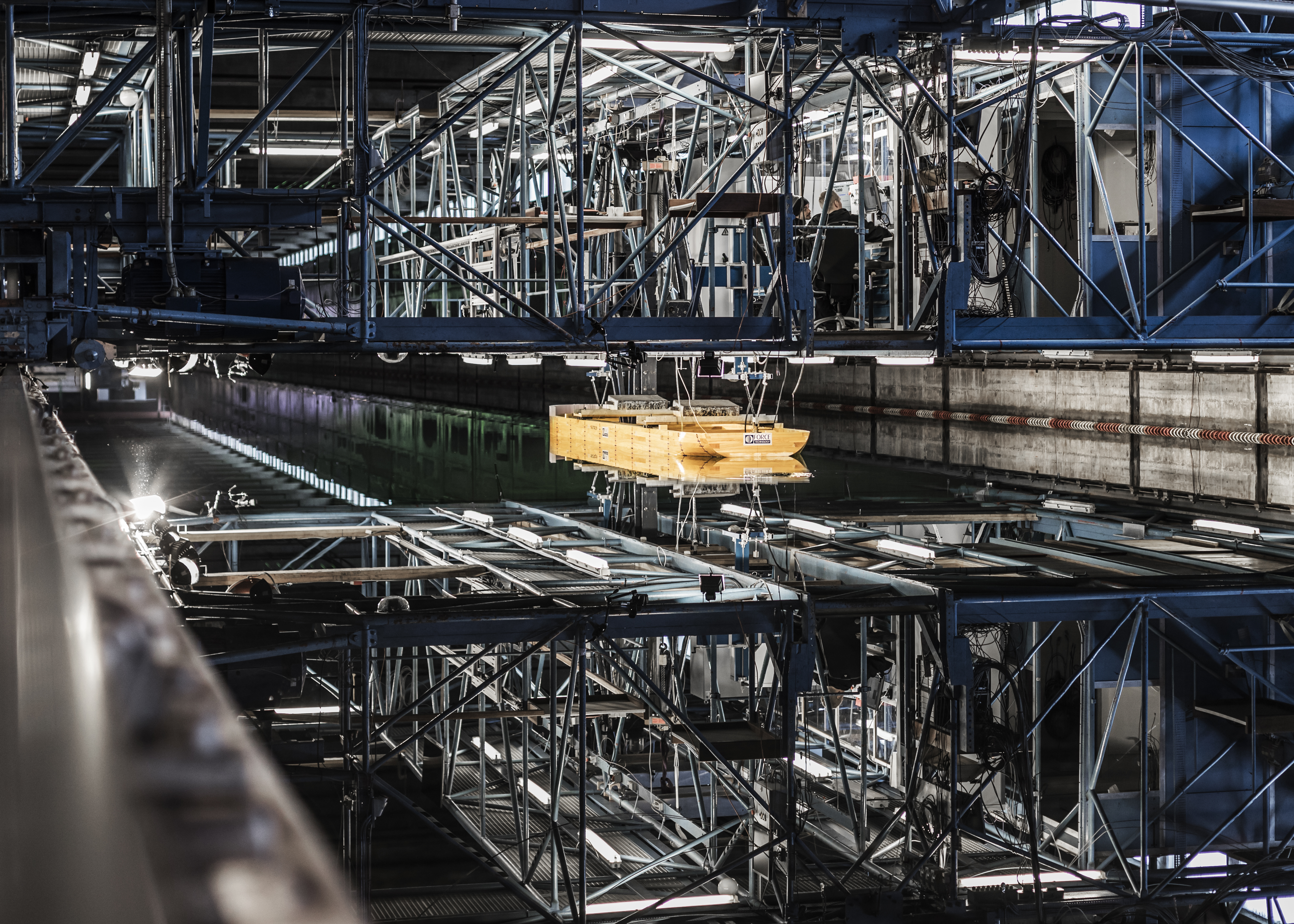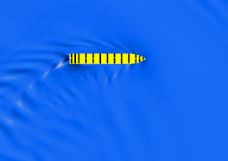Hull line optimisation
Many parameters such as resistance and trim can be evaluated quite accurately by Computational Fluid Dynamics (CFD), and the hull optimisation can be guided by detailed insight into the flow features.
Technical approach
The CFD calculation is conducted as a numerical towing tank test similar to a test conducted in our physical towing tank. Computations are done in model scale, and full-scale results are made based on traditional scaling laws as if data came from the towing tank.We use the state-of-the-art CFD tool StarCCM+ as the standard tool in lines review and optimisation scopes. Through continuous development backed by validation against results from our physical towing tank, the computations have a more than 95% accuracy in predicted hull resistance – i.e. a very realistic estimate of the hull resistance.
Optimisation strategies
Typically, we apply one of two optimisation methods:- manual, iterative optimisation
- parametric optimisation utilising CAESES.
Manual, iterative optimisation
In the manual, iterative optimisation, the hull form is optimised for a limited range of speeds and conditions, e.g. one condition, two speeds or vice versa. The optimisation is performed as a number of cycles.The cycle is repeated 2-4 times depending on the scope of the optimisation and will typically lead to significant reductions in resistance and a balanced flow around the ship.
Parametric optimisation using CAESES
Many ships are operating at a large range of conditions and speeds which makes a one-speed, one-condition optimisation less useful as the ship will operate off design a lot of the time and thus use disproportionally large amounts of fuel. Keeping an overview of the performance at several loading conditions and speeds in a traditional optimisation as described above, however, is troublesome especially when simultaneously having to take design constraints into consideration.In order to overcome this, we have acquired CAESES which offers a good book-keeping ability to be able to rank a large number of hull forms over a range of conditions and speeds while checking that no constraints are broken.
In addition to this, CAESES can apply hull form changes governed by a number of design parameters defined by our naval architects combined with sophisticated optimisation algorithms; this allows for automation of the optimisation process and the ability to test a very large number of hull forms within given limits. The result of this is a hull form which is fine-tuned to operate at the exact operational profile given by the ship owner.
The actual CFD calculations are done outside CAESES by interfacing with StarCCM+, thereby letting the CAESES take care of hull changes and ranking of designs.



